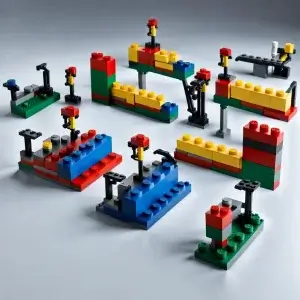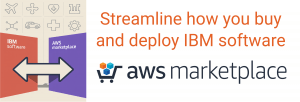Creating a Product Reuse Platform With Modern Product Variant Management
Systems engineering projects in the Automotive, Aerospace and Defense, Electronics, and Medical Device industries  are seeing an increased adoption of Product Line Engineering (PLE) to improve product variant management. This approach equips organizations with the capability to efficiently and cost-effectively develop products and better positioning them to compete in dynamic customer-oriented markets.
are seeing an increased adoption of Product Line Engineering (PLE) to improve product variant management. This approach equips organizations with the capability to efficiently and cost-effectively develop products and better positioning them to compete in dynamic customer-oriented markets.
PLE operates on a foundation of a core reusable architecture, employing a platform approach to define key features and planned product variants. Feature models play a pivotal role in modeling dependency knowledge, allowing for the efficient generation of variants through a “factory approach.” This approach provides a reuse platform to optimize reuse and eliminate redundant development efforts.
In the current market landscape, marked by heightened demands for personalization and configuration options, organizations are increasingly turning to developing product families or lines. However, diversifying products and components introduces technical challenges, especially as product complexity continues to grow.
Many organizations today leverage a clone-and-own (C&O) approach to developing new variants. C&O involves cloning an existing product, or pieces thereof, then modifying it to add and/or remove some functionality in order to create a new product variant. This becomes very inefficient as product families expand. Organizations are rethinking this approach and are moving towards a modern approach for managing product variants. Focusing on the development of complex and software-intensive physical products such as cars, control systems, or automation components.
The advantages of moving to product line engineering
1. Enhanced and Consistent Product Quality: PLE ensures high-quality products by leveraging a core architecture that defines both the key features and intended product variants.
2. Accelerated Product Development and Introduction: With PLE, product development and deployment processes are expedited, allowing businesses to respond swiftly to market changes and customer needs.
3. Efficient Resource Utilization: PLE optimizes resource use by focusing on the development of product lines rather than individual products.
4. Expanded Product Innovation Capacity: PLE facilitates product innovation by using feature models to model dependency knowledge.
5. Improved Market Presence and Competitiveness: By managing the product portfolio as a cohesive unit, companies can optimize market launch time, product quality, and development costs.
How to start — A quick guide
Adopting PLE in an organization often involves three stages:
1. Maturity Determination: Identify where your organization stands concerning PLE. Define your objectives and create an action plan.
2. Clarifying Roles and Responsibilities: Introducing PLE often requires new roles and team structures.
3. Integrated Platform and Model-Based Systems Engineering (MBSE): Utilize specialized PLE tools and consider using MBSE to handle complexity.
PLE Adoption: An Incremental Approach
Transitioning to PLE should ideally be gradual. An incremental approach that begins with a small product line can be beneficial to demonstrate PLE’s effectiveness and efficiency before implementing it at larger scales. Here is a blog post on our approach to incremental implementation.
Step 1: Understand the Concept: The first step towards embracing PLE is to grasp its key concepts like variants, feature models, and product line architecture. These concepts form the core of PLE and understanding them is the preliminary step towards implementing this approach.
Step 2: Evaluate the Need for PLE: The next step is to evaluate whether PLE is suitable for your organization. This can be achieved by examining your current product development process and identifying the challenges you face. If you’re dealing with issues such as poor reuse, high development costs, long time-to-market, and quality concerns, PLE can help.
Step 3: Maturity Determination: Determine where your company stands in terms of PLE. Identify your goals and create an action plan.
Step 4: Clarify roles and responsibilities: The introduction of PLE often requires new roles and team structures.
Step 5. Separate development phases: Divide PLE development into domain engineering (development of reusable platforms) and application engineering (creating products from the platform).
Step 6: Develop a Common Feature Model: Developing a common feature model is a key practice in PLE. This model should include all possible features and their dependencies to ensure a smooth product development process
Step 7: Leverage Reusable Components and Processes: One of the core principles of PLE is the reuse of components and processes. This approach accelerates product development and reduces costs .
Step 8: Establish a Common Product Line Architecture: Creating a common product line architecture is another best practice for PLE. This ensures that all products within the line share a common structure, facilitating the reuse of components and reducing the complexity of the development process.
Steps to evaluating your Product Line Management alternatives
Evaluating product line engineering (PLE) alternatives is a critical step in ensuring that you choose the right approach for your organization. Here’s a structured approach to help you evaluate your PLE alternatives:
1. Define Evaluation Criteria: Clearly define the criteria that are most important for your organization. Consider aspects such as scalability, flexibility, ease of integration, cost-effectiveness, and alignment with your specific industry requirements.
2. Identify Stakeholders: Determine the key stakeholders involved in the PLE evaluation process. Include representatives from engineering, product management, quality assurance, and any other relevant departments to ensure a comprehensive evaluation.
3. Understand Current Challenges: Assess your organization’s current product development challenges. Identify pain points, areas of inefficiency, and specific needs that a PLE solution should address. This will guide your evaluation criteria.
4. Evaluate Features and Functionality: Assess the features and functionality of each PLE alternative. Consider whether the solution supports core PLE principles such as variant management, feature modeling, and domain engineering.
5. Scalability: Evaluate the scalability of each PLE alternative. Ensure that the chosen solution can accommodate the growth of your product line and handle an increasing number of variants without compromising performance.
6. Integration Capabilities: Consider how well each PLE alternative integrates with your existing tools and systems. Seamless integration is crucial to avoid disruptions in your current development processes.
7. Ease of Adoption: Assess the ease of adopting each PLE alternative. Look for solutions that offer good documentation, training resources, and support to facilitate a smooth transition for your teams.
8. Cost Considerations: Consider the overall cost of each PLE alternative, including licensing fees, implementation costs, and ongoing maintenance expenses. Ensure that the chosen solution provides good value for the investment.
9. Proof of Concept (PoC): Conduct a proof of concept with the shortlisted PLE alternatives. This allows you to test the solutions in a controlled environment, addressing specific use cases relevant to your organization.
10. Vendor Support and Roadmap: Evaluate the level of support provided by the vendors. Consider their responsiveness to inquiries, availability of updates, and the long-term roadmap of the PLE solution.
11. Pilot Implementation: Before a full-scale implementation, consider a pilot project with the chosen PLE alternative. This allows you to assess its performance in a real-world scenario and make any necessary adjustments before broader adoption.
By following this approach, you can systematically evaluate your product line engineering alternatives and make an informed decision that aligns with the unique needs and challenges of your organization.
PLE can revolutionize your product development process and give you a competitive edge in the market. By understanding its key concepts, evaluating its suitability, attending workshops, choosing the right tools, and adopting best practices, you can successfully implement PLE in your organization.
To learn more about Product Line Engineering (PLE)and modern variant management, visit 321 Gang. We can help with assessments, evaluations and implementation/training/migrations around PLE. We work with enterprises to accelerate the engineering and development of large, engineered systems. 321 Gang Consultants work with the industry-leading system builders of embedded software on best practices for requirements management, model-based systems engineering (MBSE), test management/verification and validation, and traceability for compliance and reporting. Visit our website or contact us to learn how we can improve your variant management capabilities.
Ready to take the next step?
Whether you’re looking to improve efficiency, enhance product quality, or accelerate your product development cycle, 321 Gang has the expertise and tools you need to succeed. Let us help you unlock the full potential of your product development process with a lean-agile approach.
Contact 321 Gang today to learn more about how we can help you achieve a competitive edge through lean-agile transformation. Embrace the future of product development with 321 Gang as your trusted partner.
By Tom Hollowell | 321 Gang

321 Gang | 14362 North FLW | Suite 1000 | Scottsdale, AZ 85260 | 877.820.0888 info@321gang.com
The Future is Now
We have helped our clients:
- Reduce development costs by 50-60%
- Accelerate time to market by 20-40%

